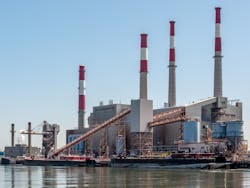Grateful, Not Dead: Grid Reliability’s Long, Strange Trip
For better and for worse, part of the foundational “utility” of electric utilities has been their invisibility. But isn’t it good now and then for the utility industry to give customers reasons for rightful gratefulness about their electric utility service, instead of letting them continue to take it for granted except during outages?
The work involved in ensuring continued reliability of the North American grid’s underlying bulk power system is the result of ongoing, multi-decades-long processes. After each major blackout’s restoration work is completed, postmortem forensic analyses have yielded wide-ranging improvements in reliability-related standards and processes.
Taking a 50+ year view across these improvement processes made sense for me after I reviewed a May 2018 joint FERC/NERC report on electric grid black start capabilities. It is amazing to be reminded of how much more integrated our grid and grid-related planning has become, and what “a long strange trip it’s been.” (Yes, the Grateful Dead song comes to mind, even though the grid study’s title is no toe-tapper: “Report on the FERC-NERC-Regional Entity Joint Review of Restoration and Recovery Plans—Recommended Study: Blackstart Resources Availability.”)
The sophistication level of the FERC/NERC report makes the low-level of blackstart capability of the 1960s seem incredible, in retrospect.
Consider what happened to the Ravenswood Generating Station when, just a few months into operation, the Great Northeast Blackout of Nov 09, 1965, occurred. The 1,000 MW facility, located in Queens, New York, was the largest oil-fired power plant of its time.
When the cascading failures of the 1965 blackout made their way to the plant, and the plant automatically tripped due to it having no load to serve, the only backup power for the auxiliary equipment at the plant was a line to a feeder in Queens—none of the backup diesel generators or other systems we now take for granted. Why? Because it was assumed the grid would always be up and running, and available to enable blackstart of the power plant. Instead, as a result of the grid being down and the plant tripping, there was no backup power to run the lubricating oil pumps for the generator/turbine set, so its 60 tons of metal rotating at 3600 rpm failed catastrophically.
Fast-forwarding 50+ years to the present, such hubris is no longer evident. North America’s regional black start restoration plan involves sophisticated sequences of so-called “cranking paths” for each of NERC region’s operating entities, and is also associated with committed contracts with sequences of blackstart and next-start generation operators.
The new FERC/NERC report provides an update on these plan assessments and collaborative studies across the regional operating entities making up the North American Electric Reliability Council (NERC), which have been conducted jointly with FERC since 2014. It also documents the results of further study and testing for availability of blackstart resources, and points the way to related resource replacement strategies to be considered going forward.
Simply put, as the grid evolves, its restoration plans also must evolve, both from the perspective of anticipation of standard blackstart conditions as well as non-standard contingencies and vulnerabilities, along with identification of methods and practices that could be used to improve participating entities’ restoration plans and training.
Planned scenarios’ contingencies not only include physical and cyber vulnerabilities, as well as hurricane and severe winter weather conditions. In addition, plans also involve the need to address availability of multiple fuels for generation, so as to not be vulnerable to fuel supply shortages or the inability to store or deliver sufficient fuel when needed.
As plants retire and new plants come on line, planners need to review related blackstart resource availability and also ensure up-to-date testing of these resources is conducted.
Participants in the current study are located in five of the eight NERC regions, and provided valuable information to one another in order to share best practices and optimize planning and intra-regional cooperation.
The blackstart generating units included in participants’ plans range in size from small (e.g., 50 MVA) to larger units (e.g., 100-200 MVA), to banks of generating units exceeding 1,000 MVA in capacity. Participants’ blackstart resources include a mix of coal and gas-fired steam units, gas combustion turbines, and hydroelectric units. So while much has been made of improving the reliability of wind, solar, and storage, the role of such power sources is still a “future” when it comes to blackstart. As stated in the report, “The joint study team found that none of the participants currently employ wind or solar resources for blackstart services due to the variability or intermittent nature of these resources. However, some participants are in discussions with vendors to assess the feasibility of procuring battery storage systems for use as a blackstart resource among other services.”
Additional highlights of interest from the report include the following:
- The team found that some participants have experienced fairly significant changes in the availability of blackstart resources in their areas, while others have experienced few if any changes necessitating replacement of blackstart resources.
- Despite the decrease in the total number of available blackstart-capable resources experienced by some participants, the joint study team found that all participants have verified they have sufficient blackstart resources to support their system restoration plans.
- Most participants have identified multiple blackstart resources in their system restoration plans, and some also indicated that they have access to other blackstart-capable units beyond those specifically identified in their current restoration plans.
- System restoration plans typically identify “priority loads,” whose prolonged interruption may have an undesirable impact on health, safety, and the environment, and are therefore targeted for restoration as early as possible in the system restoration process. For the study participants, priority load includes off-site power for nuclear generating stations (to maintain safe shutdowns), cranking power to certain generating units, power to natural gas infrastructure (such as electric compressors), power to pumping stations for oil pipelines, military installations and flood water control installations, and power to hospitals and other emergency operations.
- The importance of dual fuel capabilities (using both oil and gas) came to the fore, e.g. with one participant reporting that about 50% of its blackstart generation capacity has dual fuel capability and that it is currently considering requiring all future blackstart generating units to be dual fuel capable units.
- As discussed in the first joint Report on Restoration and Recovery Plans, the potential for increasing cyber threats accentuates the need for viable blackstart capability. Maintaining a list of these replacement blackstart-capable units could prove valuable if a cyber event prevents the use of those blackstart units identified in entities’ system restoration plans.
- Participants negotiate a commitment period for providing blackstart service with the blackstart service providers ranging from one to twenty years. Blackstart service providers can opt out of these contracts, but must provide timely notification to the procurer. This requirement allows for timely procurement of replacement blackstart resources in the affected areas.
- Some participants may agree to provide a contribution towards a feasibility study to assess the installation, technical capabilities, and cost of installing blackstart capability at the site.
The full FERC/NERC report is at this link.
About the Author
Peter Arvan Manos
Utility Industry Analyst
Peter Manos is Director of Research for Electric Power & Smart Grid, on the Energy Sector team at ARC. He analyzes the latest trends across People, Process, and Technology to uncover business and digital transformation best practices for electric, gas, and water utilities. He can be reached at [email protected]

